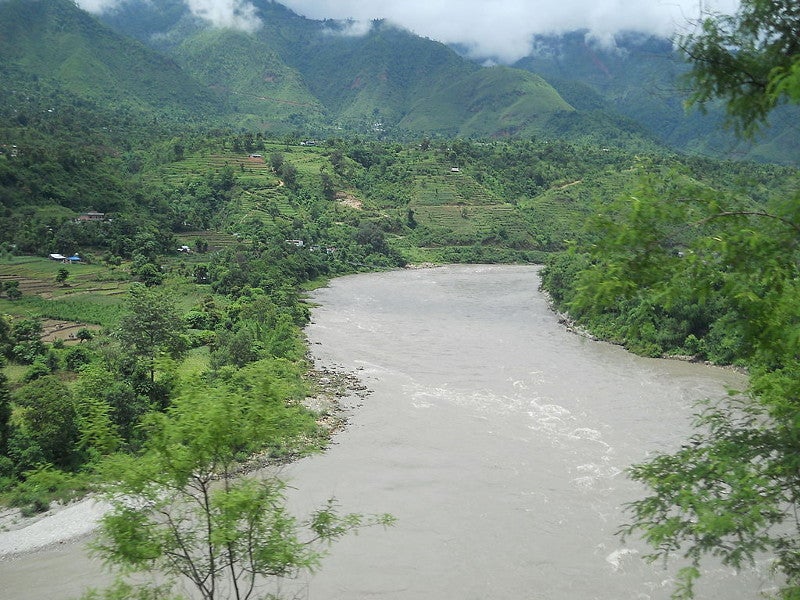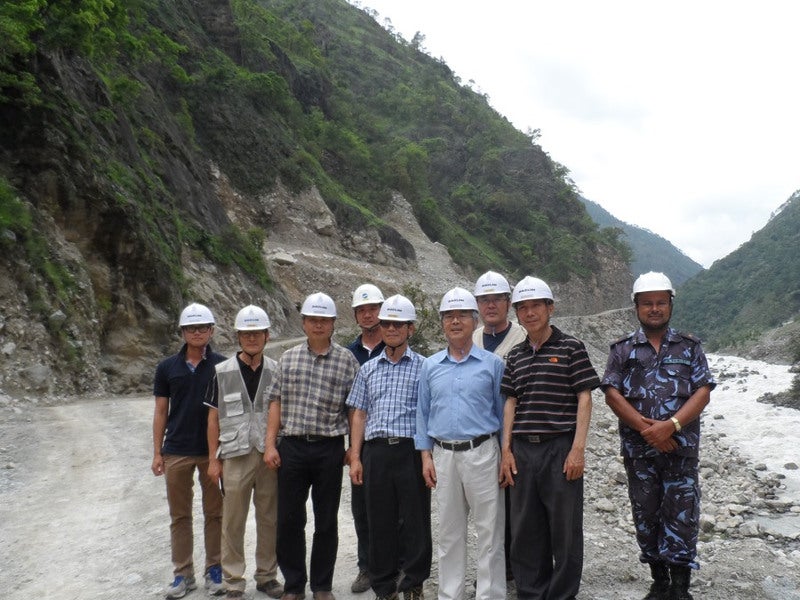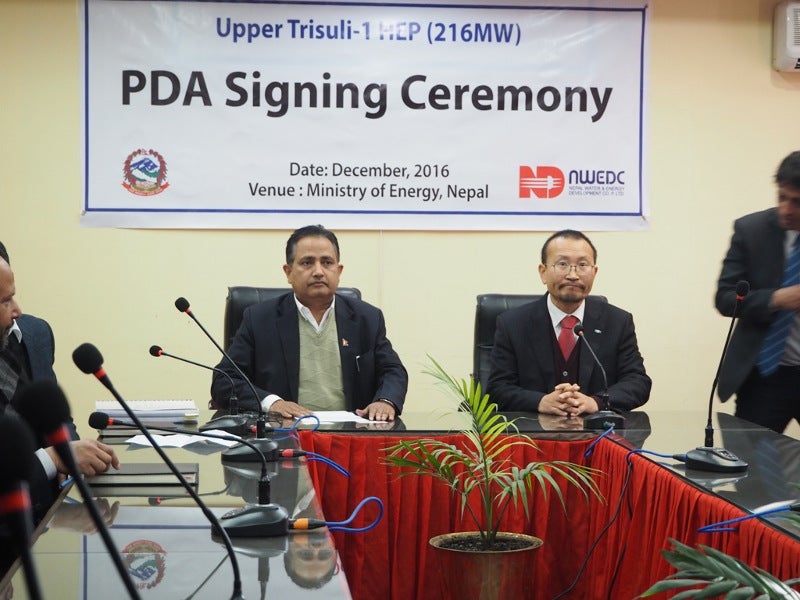Upper Trishuli-1 (UT-1) is a 216MW run-of-the-river hydropower project being developed on the Upper Trishuli River, in the Rasuwa district of Nepal.
Nepal Water and Energy Development Company (NWEDC), a special purpose company, is developing the project on build-own-operate-transfer (BOOT) basis, under a project development agreement signed with the Government of Nepal in December 2016.
The concession period for the project is 35 years, including five years of construction period.
The total project cost is estimated to be $647.4m, which will be financed entirely by foreign capital.
The shareholders of NEWEDC include Korea South East Power Company (52%), Daelim Industrial Company (16%), Kyeryong Construction Industrial Company (10%), International Finance Corporation (12%), and the local Nepalese partner Mr. Bkesh Pradhanang (10%).
Construction on the project is expected to be started in 2020, while commissioning is expected in 2024.
The Upper Trishuli-1 project is expected to generate up to 1,456GWh of electricity a year and increase the country’s total power generation by 20%. It is expected to create employment opportunities for 500 local workers during the construction phase and up to 40 permanent jobs during the operation period.
Upper Trishuli-1 hydropower project make-up
The Upper Trishuli-1 hydropower facility will comprise a 100.5m-long, 30.9m-wide, and 30m-tall concrete gravity diversion dam structure approximately 275m downstream of the confluence of the Langtang Khola tributary with the Bhote Khosi River.
The diversion dam will create a 2.1ha impoundment, from where the water will be diverted through two horizontal bell-mouth type intake tunnel structures with 3.25m-wide and 6.5m-high roller gates.
Water will be discharged at a rate of 76m³/s, through a 9.7km-long and 6.5m-diameter low-pressure headrace tunnel.
Underground horizontal flushing type desander will be installed to settle and remove the sediments from water, while an 8.5m-diameter and 38m-long surge tank will be used to manage pressure changes in the headrace tunnel.
Water will flow through a 292m vertical pressure tunnel followed by a 40m-long horizontal pressure tunnel before entering the 110.7m-long and 1.6m-diameter steel-lined penstocks to drive turbines.
The underground powerhouse will be equipped with three vertical axis Francis turbine generator units of 72MW capacity each.
Water from the powerhouse will be returned to the Trishuli River approximately 10.7km downstream of the dam through three 6.5m-diameter and 55m-long tail-race tunnels, which will eventually combine into a 178m-long single concrete tunnel.
Infrastructure
The Upper Trishuli-1 project site, located approximately 70km north-west of Nepal’s capital Kathmandu, can be accessed via a 15km access road on the right bank of the river.
Other infrastructure facilities for the project include operations and maintenance building, a switchyard, warehouse, administrative buildings, as well as accommodation buildings for workers.
Power off-take and transmission
Nepal Electricity Authority (NEA) will purchase the entire electricity output of Upper Trishuli-1, under a 30-year power purchase agreement (PPA) signed with NWEDC in January 2018.
The power generated by the plant will be evacuated to the national grid through a 1.1km-long 220kV transmission line connecting the Chilime-Trishuli transmission line.
Financing
The financing of the $647.4m project is planned to be met through 70% debt and 30% equity.
Equity investment of $194.2m will be provided by the project partners, while the debt of $453.2m is being provided by group of international lenders including International Finance Corporation, Asian Development Bank, Asian Infrastructure Investment Bank (AIIB), Proparco (France), DEG (Germany), FMO (The Netherlands), and Korean Development Bank.
Asian Infrastructure Investment Bank (AIIB) approved $90m loan for the Upper Trishuli-1 project in June 2019.
Contractors involved
A joint venture of Daelim Industrial Company (60%) and Kyeryong Construction Industrial Company (40%) is the engineering, procurement, and construction (EPC) contractor for the Upper Trishuli-1 hydropower project.
Korea South East Power Company will be responsible for the operations and maintenance of the facility.





